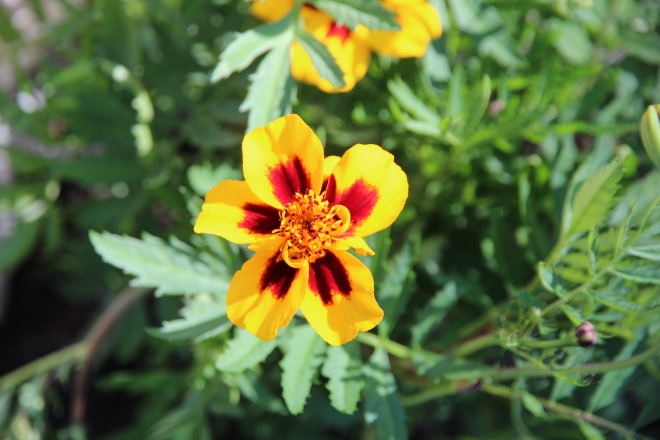There are too many plants that can be started off indoors/outdoors in March to name! But here are a few to get you started…


Carrots – Carrots – sown one trench outside under fleece
Spinach – Salad – Spinach – planted out ‘Turaco’ spinach sown last autumn in a cold frame with fleece and started off indoors ‘Barbados’ and ‘Emelia’, onto ‘Samish’ soon…
Lettuce- Salad – Lettuce – planted out lettuce sown last winter in the cold frame with the spinach and sown some seeds indoors
Radishes – Salad – Radish – sown outdoors under fleece between other crops
Celery – Celery – batch sown indoors
Celeriac – Celeriac – ”
Courgettes – Courgettes – sown indoors
Squashes – have yet to plant ‘Honey Bear’ and ‘Sunburst’
Quinoa – Quinoa – batch sown indoors
Chickpeas – Sown indoors, first time trying them this year!
Broad beans – Broad Beans – ready to plant out under fleece
Peas – started off indoors but can be sown directly now – post hopefully coming soon…
Okra – Okra – couple damped off so planted some more indoors
Rocket – Salad – Rocket – sown indoors, not doing so well…
Watercress – sown indoors
Herbs – sown the parsley and coriander so far
Fenugreek – damped off, need to sow some more indoors
Cucumbers – Cucumbers – sown indoors, doing best at moment, please stay that way!
Tomatoes – germinated very well indoors
Potatoes – time to think about planting them outdoors under a lot of earth and some cover
Turnips – just sown some
Purple Sprouting Broccoli – just sown some (as well as some more Calabrese Broccoli) indoors AND just harvested first batch of last year’s crop the other night to have with some of the last dug up potatoes from last season with baked beans, cheese and frozen homegrown runner beans – yum!
Leeks – Leeks – indoors
Spring Onions – indoors
Beetroot – indoors, on my list
Cabbages – Cabbages – ‘Red Rodeo’, ‘Advantage’, ‘Caserta’ – sown indoors
Brussels Sprouts and Brukale – Brussels Sprouts – quickly sow before it gets too late
Kale – The last of the Kale
Sweet Corn – on my list but I know from experience that I can still get away with sowing it in May, indoors
Rhubarb – Rhubarb – time to feed and start forcing
Fruit Trees/Bushes – time to feed!
There are bound to be plenty more veggies to sow/plant out as we plough on through the first month of spring. Temperatures are finally warming up but hang onto some fleece – the fruit trees might be lured into a false spring, deadly for blossom and fruit production… Make sure anything you sow outside/ plant out is wrapped up under cover, nice and snuggly. It will be a shock to the system if they are exposed to Britain’s ‘spring time’ too early!

FLOWERS TO SOW INDOORS:
French Marigolds
Cosmos
Viola
Lavender
Geraniums
Calendulas
Lupins
Sweet Peas – they are ready to plant out under cover
There are BILLIONS more…


























